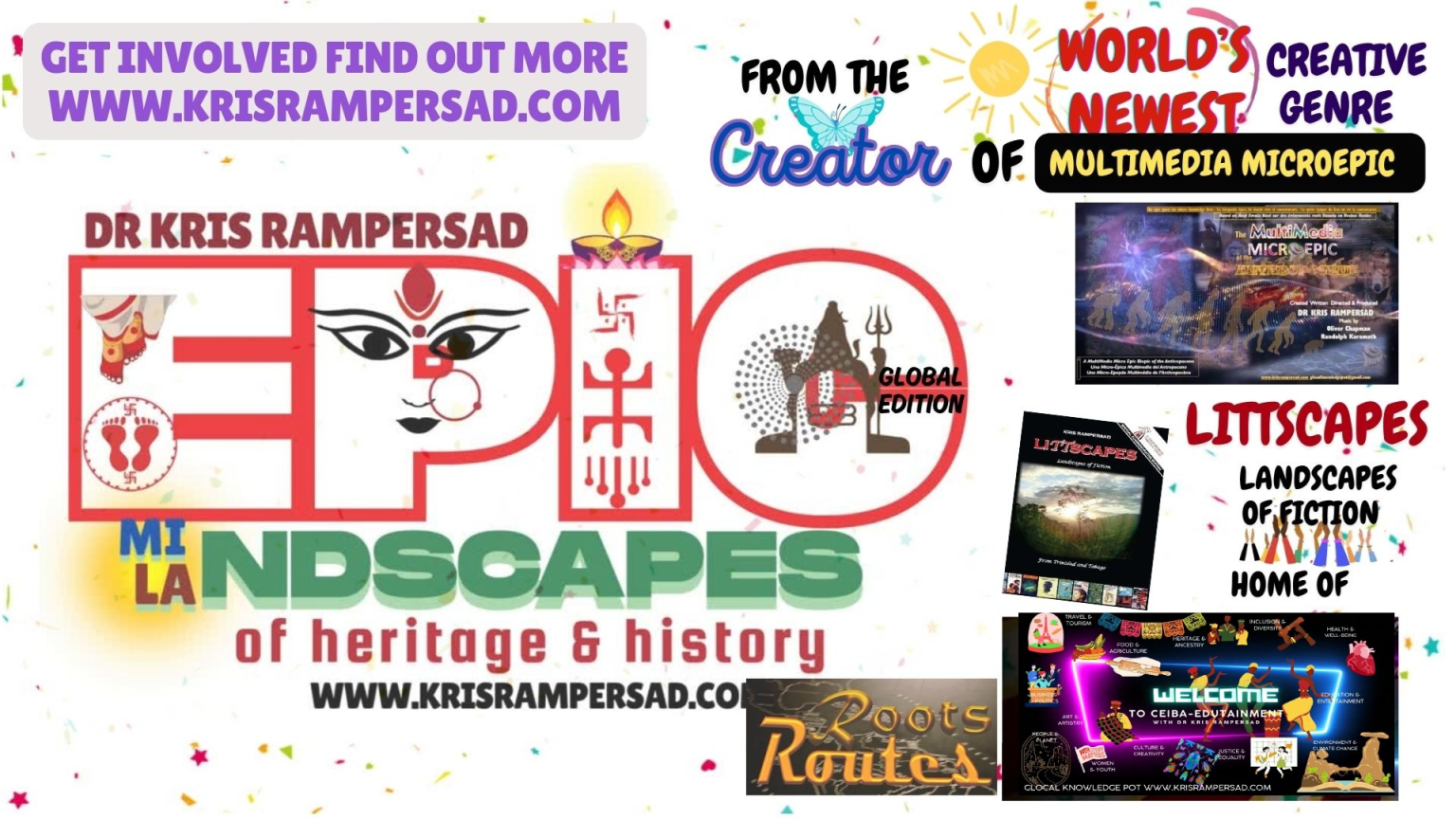Trinidad and Tobago’s Dr Kris
Rampersad, author of LiTTscapes
– Landscapes of Fiction from Trinidad and
Tobago will team up
with icons of Antigua and Barbuda to stage a literary tribute to the Antilles on
Saturday (March 23, 2013) at the museum in St John’s, Antigua.
Dr Rampersad, whose book,
LiTTscapes, was launched as part of the golden jubilee celebrations of Trinidad
and Tobago last August, has undertaken a series of tributes called LiTTributes
to highlight the contributions and value of the creative sectors of the
Caribbean.
LiTTscapes has been described
as a
groundbreaking encyclopaedic yet coffee-table style compendium of the
lifestyles, landscapes, architecture, cultures, festivals and institutions of the
Caribbean and quintessential to
the Caribbean diversification agenda as a means of promoting sustainable development
through the creative sector in its presentation of history, politics, cultures and lifestyles, by
reviewers as head of the Guyana Prize for Literature and deputy vice chancellor
of the University of Guyana, Professor Al Creighton; Poet Laureate of Port of
Spain, Pearl Eintou Springer; former principal and pro vice-chancellor of the
University of the West Indies, Dr Bhoe Tewarie and former First Lady of
Trinidad and Tobago Dr Jean Ramjohn Richards, among others.
Said Creighton: “Easy
to read, LiTTscapes is a work of art,
a documentary, a travelogue, a critical work with visual and literary power. It
is a quite thorough artistic concept, a portrait and biography of the nation of
Trinidad and is attractively, neatly and effectively designed. It reflects a
considerable volume of reading, ranging from the dawn of Caribbean literature (as
early writings of Walter Raleigh, through to present including Nobel laureates
Derek Walcott and Sir Vidia Naipaul). Whatever one says no one book can do,
this one almost does.”
Rampersad explained: “The literary tributes, called LiTTributes,
celebrate the creative synergies between fiction, the built and natural
landscapes and the creative energies of writers, musicians, dramatists, artists,
architects and other creators.” She noted that the launch of LiTTscapes was followed
by the LiTTribute to the Republic in Trinidad and Tobago in September 2012 and LiTTribute
II - LiTTurgy to the Mainland in Guyana in February 2013.
“The Antiguan event is being called
LiTTribute to the Antilles and will include presentations by Rampersad and Antiguan
writers and performers, including writers as Joy Lawrence, Joanne Hillhouse and
Floree Williams with support from the Historical and Archaeological Society of
Antigua and Barbuda which operates the museum, and Best of Books, Antigua. It
will feature readings and performances inspired by LiTTscapes, which represents
some 100 works of some 60 writers, including the Caribbean Nobel laureates for
literature, Derek Walcott and Sir Vidia Naipaul.”
She said: “LiTTributes are
meant to make both the creators and our communities aware and heighten
appreciation of how we may work in tandem for the benefit of our countries and
our region. I am indeed humbled and buoyed at the enthusiasm being showed
throughout the region and indeed the diaspora for these as already I also have
interests expressed for similar LiTTributes in North American and Europe from
where a considerable number of our fiction writers have functioned.
“LiTTscapes is a celebration of ourselves –
small islands whose creative energies have generated enormous waves across the
globe, as this LiTTribute to the Antilles will endorse. Antigua has given us
writers like Jamaica Kincaid and Joanne Hillhouse. Derek Walcott titled his acceptance speech for
the Nobel Prize, The Antilles – Fragments
of Epic Memory. This event is a celebration of that epic Antilles, not as fragments,
but for the wholeness of our aesthetics,” said Rampersad.
Rampersad said along similar
lines of the LiTTscapes celebrations, the Antigua/Barbuda event will feature
the Caribbean architectural alongside literary, visual and performance
heritage. Its staging at the museum building will recognise Antigua’s oldest heritage building which is the former site of an
indigeneous marketplace. Previous events were staged at the historic Moray
House in Guyana, Knowsley Building in Port of Spain and White Hall, one of Port
of Spain’s Magnificent Seven edifices.
For details and information,
reviews, interviews email lolleaves@gmail.com
or visit kris-rampersad.blogspot.com.
In Brief:
LiTTscapes: Key Features
Ø Full
colour, easy reading, coffee table-style
Ø More
than 500 photographs of Trinidad and Tobago
Ø Represents
some 100 works by more than 60 writers
Ø Captures
intimate real life and fictional details of island life
Ø Details
exciting literary moments, literary heritage walks & tours
Ø Essential
companion on T&T for tourists, students, policy makers, academics, lay
readers
Ø Totally
local effort to stimulate local creative industries
Ø Encourage
literacy and creative activity
See: LiTTscapes album on Facebook:
https://www.facebook.com/kris.rampersad1
About the
Author – Kris Rampersad
For
more than two decades Dr Kris Rampersad has been actively involved in
analysing, assessing, critiquing and defining the development agenda for
Caribbean societies.
She
is a journalist and educator in Caribbean literature, culture and heritage.
See: https://sites.google.com/site/krisrampersadglobal;
http://kris-rampersad.blogspot.com




